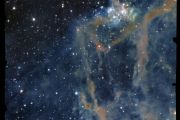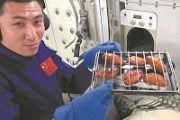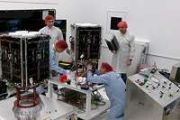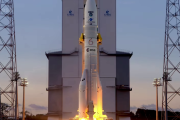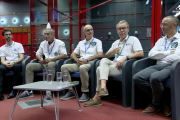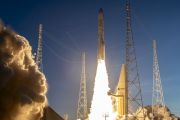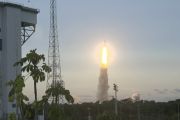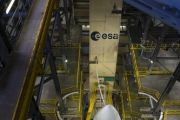
Copernical Team
Russia to launch lunar mission Friday, first in nearly 50 years
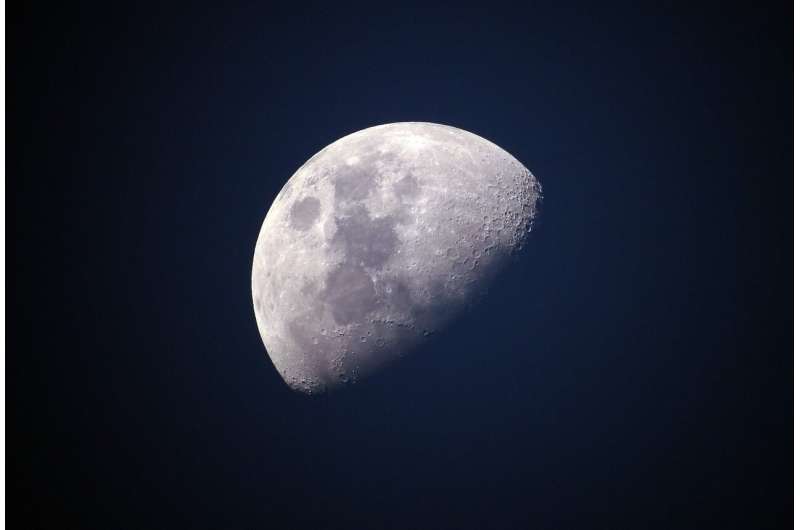
Russia said Monday it plans to launch a lunar lander this week after multiple delays, hoping to return to the moon for the first time in nearly fifty years.
The launch, which is scheduled for the early hours of Friday, comes as Russia's Ukraine offensive stretches into a second year, sparking huge tensions with the West.
With the Luna-25 lander, Russia's first since 1976, Moscow is keen to restart and build upon a pioneering Soviet-era lunar program.
The Russian space agency said that a Soyuz rocket had been assembled at the Vostochny cosmodrome in the Russian Far East for the launch of the Luna-25.
"The launch is on August 11," Roscosmos said in a statement.
"The Luna-25 will have to practice soft landing, take and analyze soil samples and conduct long-term scientific research," the statement added.
The four-legged lander, which weighs around 800 kilograms, is expected to touch down in the region of the lunar south pole. By contrast, most moon landings occur near the lunar equator.
The launch is the first mission of Moscow's new lunar program and comes as Russia looks to strengthen cooperation in space with China amid ruptured ties with the West.
Spacecraft, landers and rovers could be recycled for parts on the moon

Additive manufacturing is slowly becoming more and more useful as the technology improves. One of the places it continues its development is in the realm of space exploration. It has long been mooted as an integral part of any in-situ resource utilization (ISRU) efforts and is especially important for ensuring early explorers on the moon have the right tools and materials they need to survive.
The European Space Agency is supporting that research effort, as their Technology Development Element fund supported work by an Austrian company called Incus to develop a 3D printing solution that could reprint metal parts on the moon.
The moon undoubtedly has plenty of metallic ore ready to be mined by either robots or explorers. However, making metal from that ore is expensive in energy and time, both of which are limited in any early lunar exploration scenario.
Russia to launch Luna-25 on Friday, first moon mission in 50 years
 After a long hiatus of nearly fifty years, Russia is gearing up to return to the Moon with its Luna-25 lunar lander, setting the stage for a new era in lunar exploration.
The Russian space agency announced Monday that the Luna-25 lander, powered by a Soyuz rocket, is set for an August 11 launch from the Vostochny Cosmodrome in Russia's Amur Oblast at 2:10 a.m. Moscow time, The mission mark
After a long hiatus of nearly fifty years, Russia is gearing up to return to the Moon with its Luna-25 lunar lander, setting the stage for a new era in lunar exploration.
The Russian space agency announced Monday that the Luna-25 lander, powered by a Soyuz rocket, is set for an August 11 launch from the Vostochny Cosmodrome in Russia's Amur Oblast at 2:10 a.m. Moscow time, The mission mark SpaceX launches 22 additional Starlink satellites
 SpaceX successfully launched a Falcon 9 rocket with another payload of Starlink satellites into space from Florida late Sunday.
The rocket launched at 10:41 p.m. EDT from Space Launch Complex 40 at Cape Canaveral Space Force Station, sending the 22 satellites into low-Earth orbit where they will join Starlink's constellation of thousands of orbitals that provide high-speed, low-latency Int
SpaceX successfully launched a Falcon 9 rocket with another payload of Starlink satellites into space from Florida late Sunday.
The rocket launched at 10:41 p.m. EDT from Space Launch Complex 40 at Cape Canaveral Space Force Station, sending the 22 satellites into low-Earth orbit where they will join Starlink's constellation of thousands of orbitals that provide high-speed, low-latency Int Register now: ESA Open Day for people with a disability

Registration is now open for this year’s annual ESA Open Day in the Netherlands for people with a disability, which will take place on Saturday 7 October, at the Agency’s ESTEC technical centre in Noordwijk.
Save the date: ESA Open Day 2023 in the Netherlands

Save the date: this year’s annual ESA Open Day in the Netherlands will take place on Sunday 8 October, at the Agency’s ESTEC technical centre in Noordwijk. Registration to attend will be opened later this summer; keep an eye on this webpage and social media for further details.
Liftoff: 360 view of final Ariane 5
 Video:
00:02:01
Video:
00:02:01
In July 2023 local time, the last Ariane 5 blasted off from Europe’s Spaceport in French Guiana. Relive the moment from up close in this 360° video showing the liftoff and Ariane 5 soaring to orbit.
The audio comes from the camera itself that was clamped to a steel cable on a northern ramp surrounding the Ariane 5 flame trench – about 50 m from the ZL3 launchpad. Despite being so close the camera was only protected against the humidity and rain in French Guiana. A solar panel provided extra power to the camera as it had to
Webb spotlights gravitational arcs in 'El Gordo' galaxy cluster
 A new image of the galaxy cluster known as "El Gordo" is revealing distant and dusty objects never seen before, and providing a bounty of fresh science. The infrared image, taken by NASA's James Webb Space Telescope, displays a variety of unusual, distorted background galaxies that were only hinted at in previous Hubble Space Telescope images.
El Gordo is a cluster of hundreds of galaxies
A new image of the galaxy cluster known as "El Gordo" is revealing distant and dusty objects never seen before, and providing a bounty of fresh science. The infrared image, taken by NASA's James Webb Space Telescope, displays a variety of unusual, distorted background galaxies that were only hinted at in previous Hubble Space Telescope images.
El Gordo is a cluster of hundreds of galaxies DLR harnesses 3D Printing for efficient production of spaceflight components
 The German Aerospace Center (DLR) is looking into ways to make space propulsion systems more cost-effective and reusable. The emphasis of their investigation lies in the 3D Printing for Low-Cost Space Components (3D-LoCoS) project. This project seeks to enhance the techniques of metal-based additive manufacturing, essentially 3D printing processes. This advancement will allow for the swifter, mo
The German Aerospace Center (DLR) is looking into ways to make space propulsion systems more cost-effective and reusable. The emphasis of their investigation lies in the 3D Printing for Low-Cost Space Components (3D-LoCoS) project. This project seeks to enhance the techniques of metal-based additive manufacturing, essentially 3D printing processes. This advancement will allow for the swifter, mo Webb Telescope unmasks Ring Nebula's cosmic dance
 NASA's James Webb Space Telescope (JWST) has released exquisite new visuals of the famed Ring Nebula, or Messier 57, to the world. The unveiling was done by a global consortium of astronomers, a team steered by Professor Mike Barlow of UCL, UK, Dr Nick Cox of ACRI-ST, France, and with contributions from Professor Albert Zijlstra of The University of Manchester.
The Ring Nebula, a luminous
NASA's James Webb Space Telescope (JWST) has released exquisite new visuals of the famed Ring Nebula, or Messier 57, to the world. The unveiling was done by a global consortium of astronomers, a team steered by Professor Mike Barlow of UCL, UK, Dr Nick Cox of ACRI-ST, France, and with contributions from Professor Albert Zijlstra of The University of Manchester.
The Ring Nebula, a luminous 






